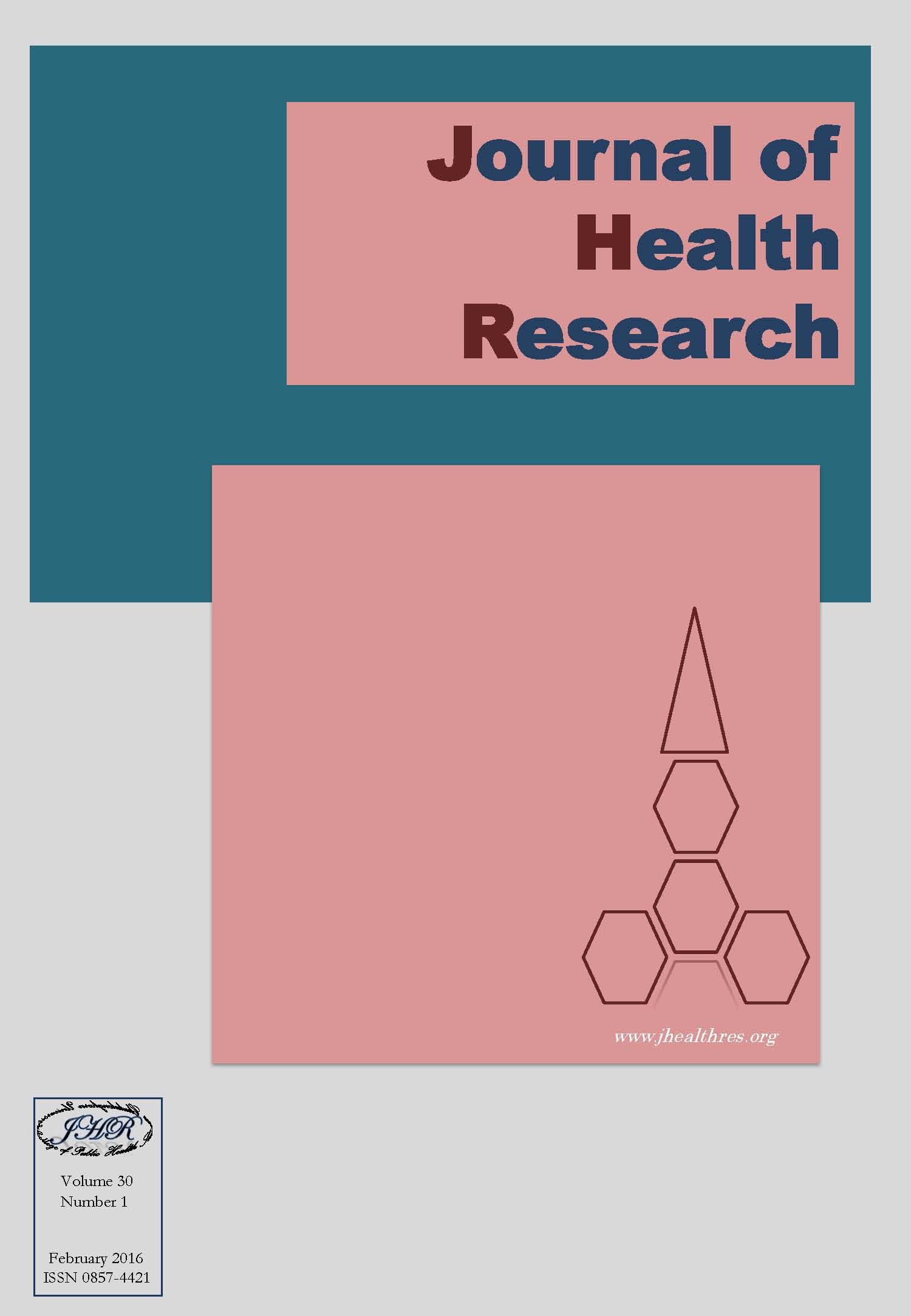Associations of Preventive Strategies with Symptoms of Eye Strain among Sukhothai Thammathirat Open University Staff in Thailand
Keywords:
Preventive strategies, Eye strain, Computer user staff, ThailandAbstract
Background: Eye strain or asthenopia is a public health problem that affects more than two thirds of all computer users globally. This cross-sectional study was designed to: (1) determine the prevalence of eye strain in computer user staff at Sukhothai Thammathirat Open University (STOU), (2) assess the extent to which strategies used by the computer user staff and whether they were associated with eye strain prevention.
Methods: Between January and February 2014, Proportional stratified random sampling was used to select 300 study participants in 11 offices of Sukhothai Thammathirat Open University, Thailand. A total of 295 (98.3% response rate) computer user staff completed a self-administered, validated questionnaire, including demographic characteristics, computer and work environment, strategies for eye care, and presence of eye strain symptoms. Data analysis was conducted to assess associations of adjusting computer and monitor, taking regular rest breaks, doing eye exercise, improving computer workstation, improving work environment, and reducing personal risk factors (i.e. get enough sleep, drink enough water, and regular eye exams), with symptoms of eye strain.
Results: (1) The prevalence of eye strain was very high, 84.7% (250 participants. Average age was 42 ± 9.31, and 231 (78.3%) were female. Worked with computer 3 or more hours per day were reported by 274 (92.9%) of the respondents. Majority of the respondents 261 (88.5%) used desktop computers. Nearly 70% of respondents (204) reported that their computer workstation were suitable, and 263 (89.2%) reported that lighting in work area were appropriate. (2) Binary logistic regression analysis indicated that taking regular rest breaks (OR = 0.37; 95% CI = 0.18-0.79) and doing eye exercise during computer use (OR = 0.07; 95% CI = 0.03 - 0.16) had a significant association with a lower rate of eye strain.
Conclusions: These fındings indicate the need for awareness of eye strain, and for research to identify strategies to prevent/reduce eye strain in computer users, especially in educational institutions where computers are widely used.







